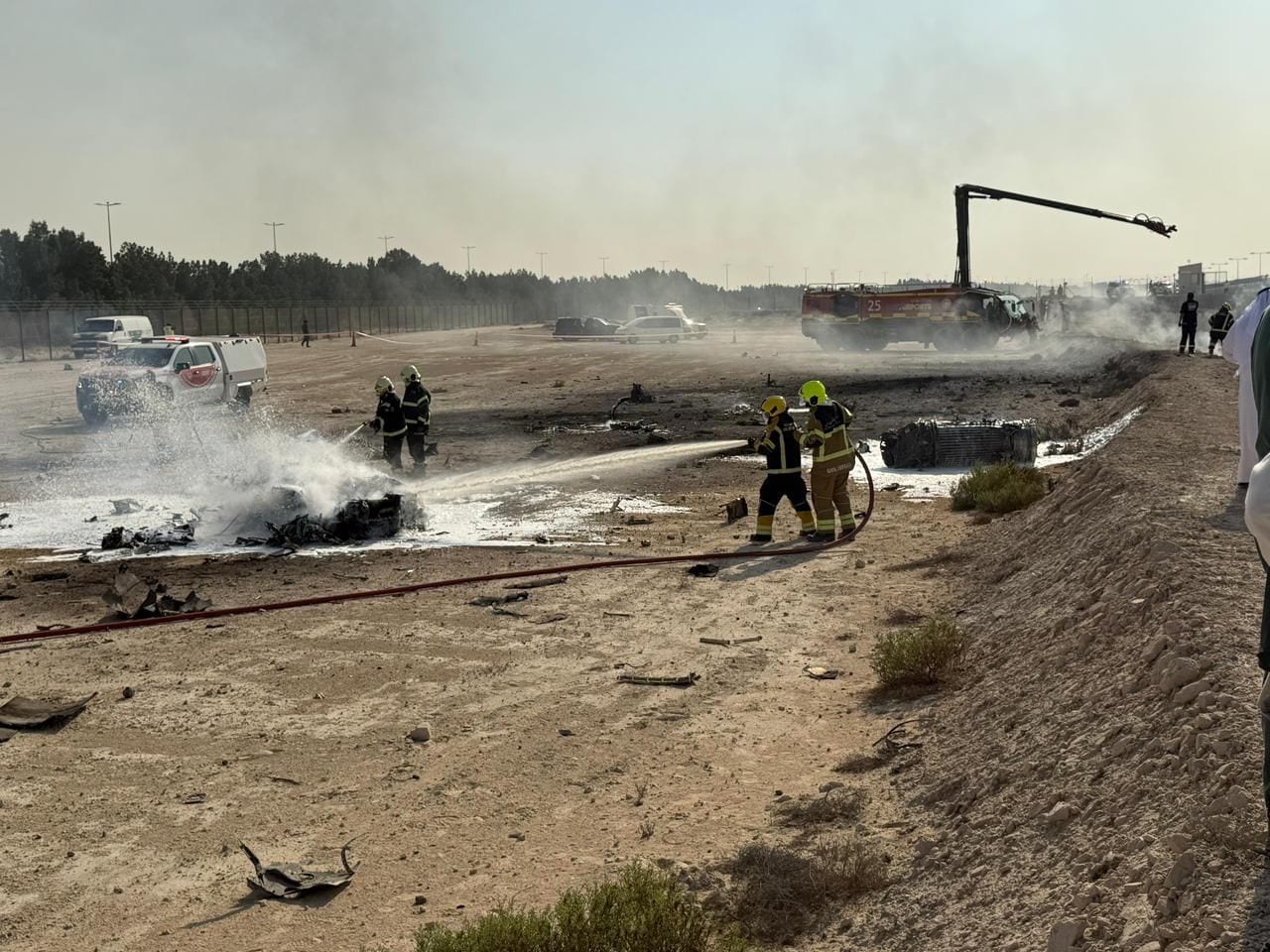
- Air Marshal Anil Chopra (retired) outlined steps to probe the LCA Tejas crash in Dubai today
- The pilot died attempting recovery from a negative G maneuver during an aerial display
- Videos and flight data will be analyzed frame by frame to understand the cause
Air Marshal Anil Chopra (retired) has explained to NDTV the likely immediate steps the authorities would take as they begin to investigate the crash of an LCA Tejas in an airshow in Dubai today.
The pilot was killed in the crash that happened while the homegrown fighter jet was trying to adjust to a level flight after a negative G manoeuvre.
"The investigation will happen very quickly. The Indian Air Force and the government will look into it closely. The HAL team is already there as they were also involved in this whole exercise," Air Marshal Chopra told NDTV.
Since the Light Combat Aircraft (LCA) Tejas crashed on foreign soil, there would be a formal process to bring the wreckage back to India.
"Yes, the local airshow organiser will of course have to get involved. The ground crew that every country brings with their aircraft will be standby. But it is not possible in a foreign country to do anything without the help of the administration. The local police will have to cordon that place. They will have to give a great amount of support," the retired IAF officer said.
"While a pure court of inquiry and technical bits will be handled by HAL and IAF, diplomatic support from the government would be needed_ All these things are already factored in [during air] displays. They have trained for an eventuality like this. And all those protocols are in place because every year there are so many air shows taking place all over the world," Air Marshal Chopra said.
A video of the crash indicated the pilot failed to recover from a negative G manoeuvre at a low altitude. Such a manoeuvre has been a defining feature of the Tejas in aerial demonstrations.
Moments before impact, the Tejas appeared with its wings level but by then, the vertical speed of the aircraft was too great and the aircraft hit the ground. The pilot didn't eject.
On how he would view the final moments of this LCA Tejas, which belonged to one of the two active LCA Tejas squadrons, the former test pilot said only a few aircraft in the world are performing negative G turns.
"But of course they are doing this because there is a way to show that the fuel system and the various other systems on board can take a fair amount of sustained negative G. It also shows the skills of the pilot and the aircraft's strengths," Air Marshal Chopra said.
"... What exactly happened between the negative G turn and the repositioning turn that took place thereafter, I personally, from the videos that I have seen on your and other channels, I could not make out if something went wrong at that transition," he said.
According to him, the transition part - from negative G manoeuvre to level flight - will be looked at in much greater detail.
"Mind you, it shows that there are videos being taken by such a large number of people, professionals, media channels, and the team_ all that will help. They [investigators] can go frame by frame to look at how and what manoeuvre was correct or incorrect, and then they will match this frame by frame with the flight data recordings_"

Air Marshal Chopra was a test pilot, and it was a demanding task because a test pilot has to evaluate an aircraft by pushing it to its limits. The LCA Tejas that crashed in Dubai during an airshow today was also flown by a test pilot.
He said flying in an airshow is a bit different from actually testing an aircraft. "You are much closer to the ground when flying in an airshow," Air Marshal Chopra said.
"Test flying is evaluating an aircraft whether it is good enough, is it meeting the specs that the manufacturer has given or not? But display flying is slightly different_ The psychology of an aerobatic display pilot may be different. The aerobatic display pilot is trying to impress, not the general public, but the world, manufacturers, other professionals, other test pilots because they are all sitting there. So it is a very different ballgame," he said.
"It requires a high degree of maturity. The aircraft has to be, of course, doubly, triply checked. And that, in any case, in aviation, you don't fly an aircraft if there is the slightest amount of doubt."
After the vintage Russian-origin MiG-21 was decommissioned recently, the LCA Tejas was billed as the next workhorse of the IAF. This small fighter jet has the best safety record in the IAF - the Dubai air show crash is the second crash in 24 years.
The first crash happened in Rajasthan's Jaisalmer in March 2024 - that was 23 years after the aircraft's first test flight in 2001.
The LCA Tejas is designed in such a way that it is inherently unstable so that it can be very agile. However, this means the LCA Tejas needs a very capable fly-by-wire system (flight computer) to keep the aircraft stable.
Track Latest News Live on NDTV.com and get news updates from India and around the world

